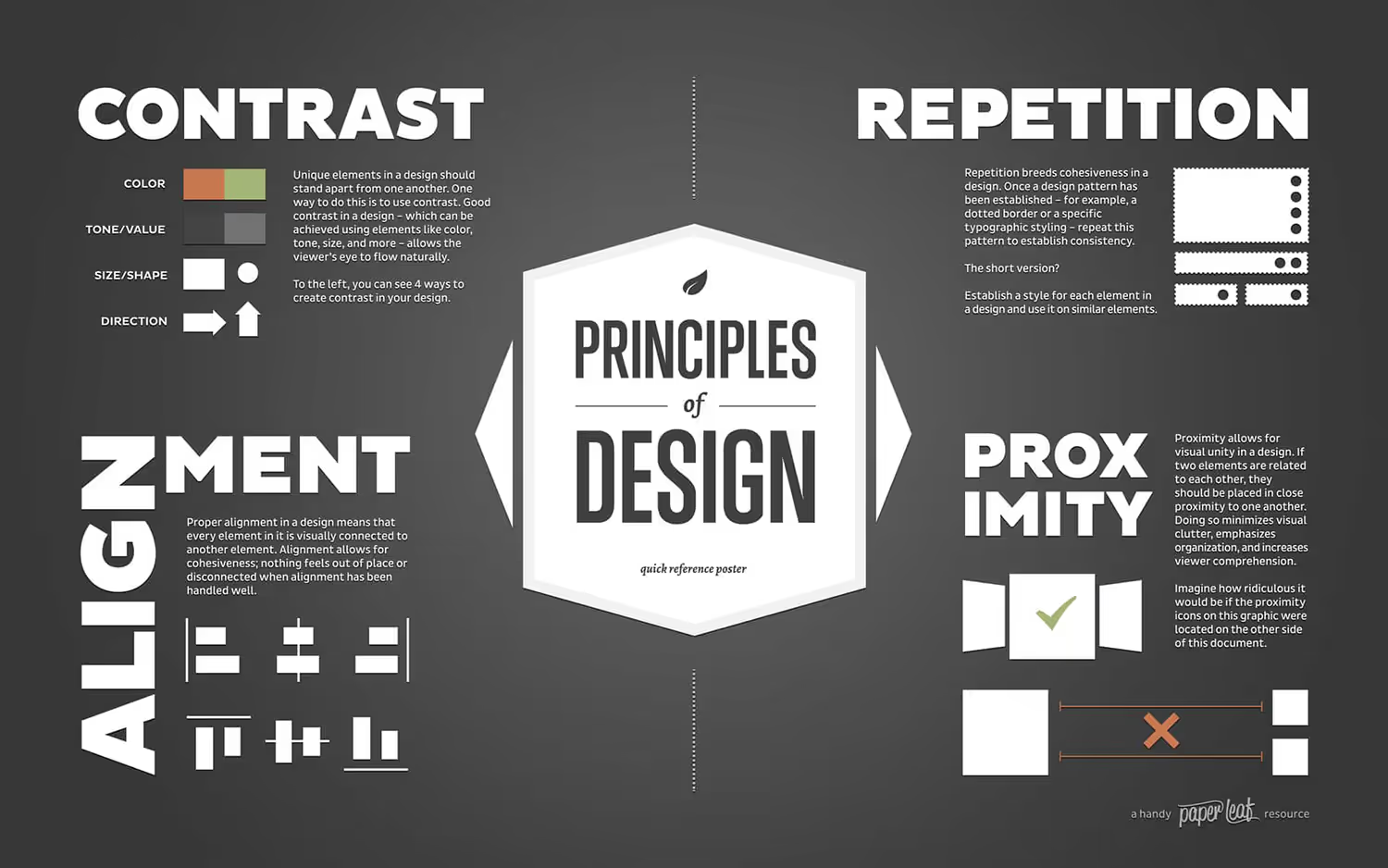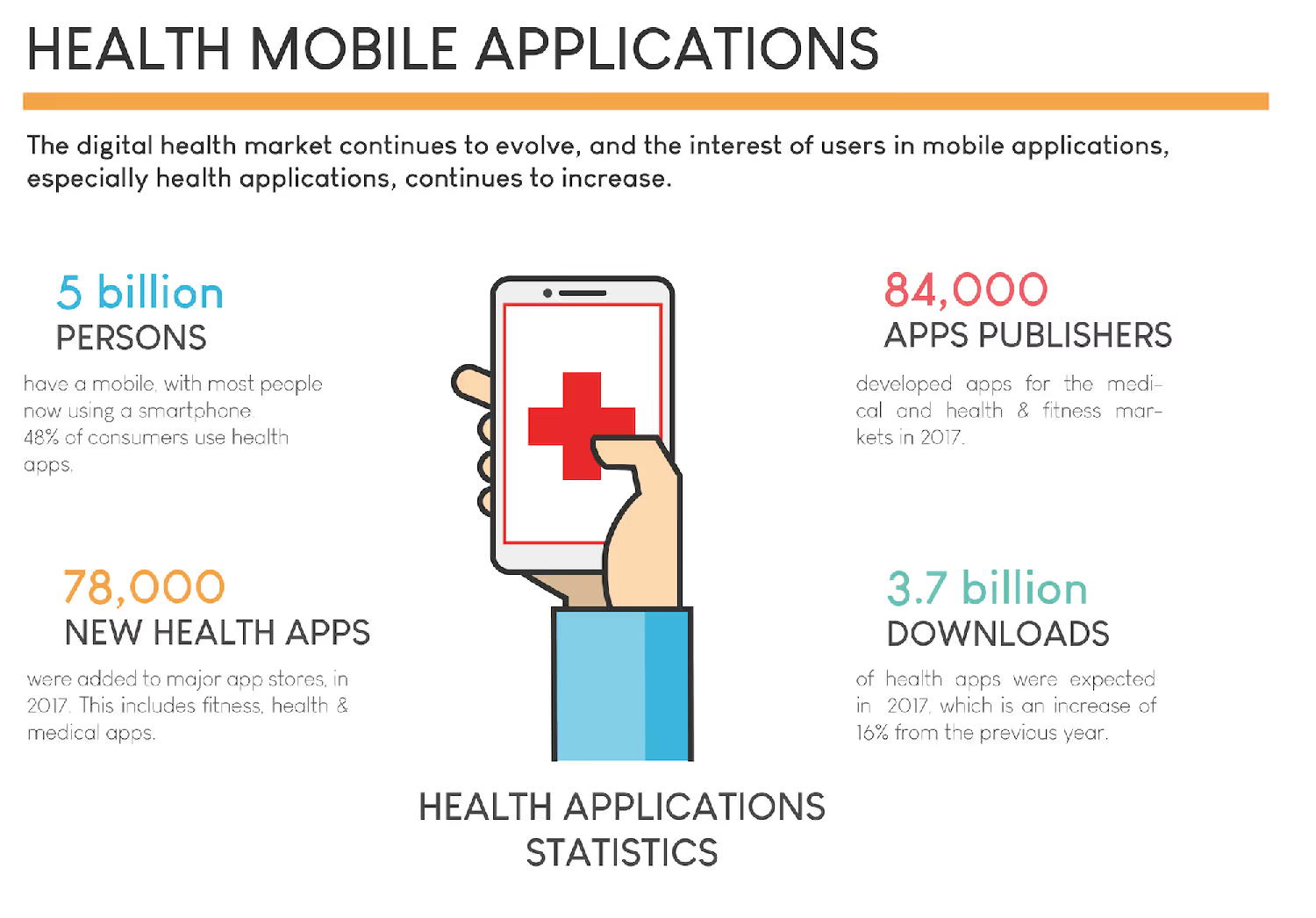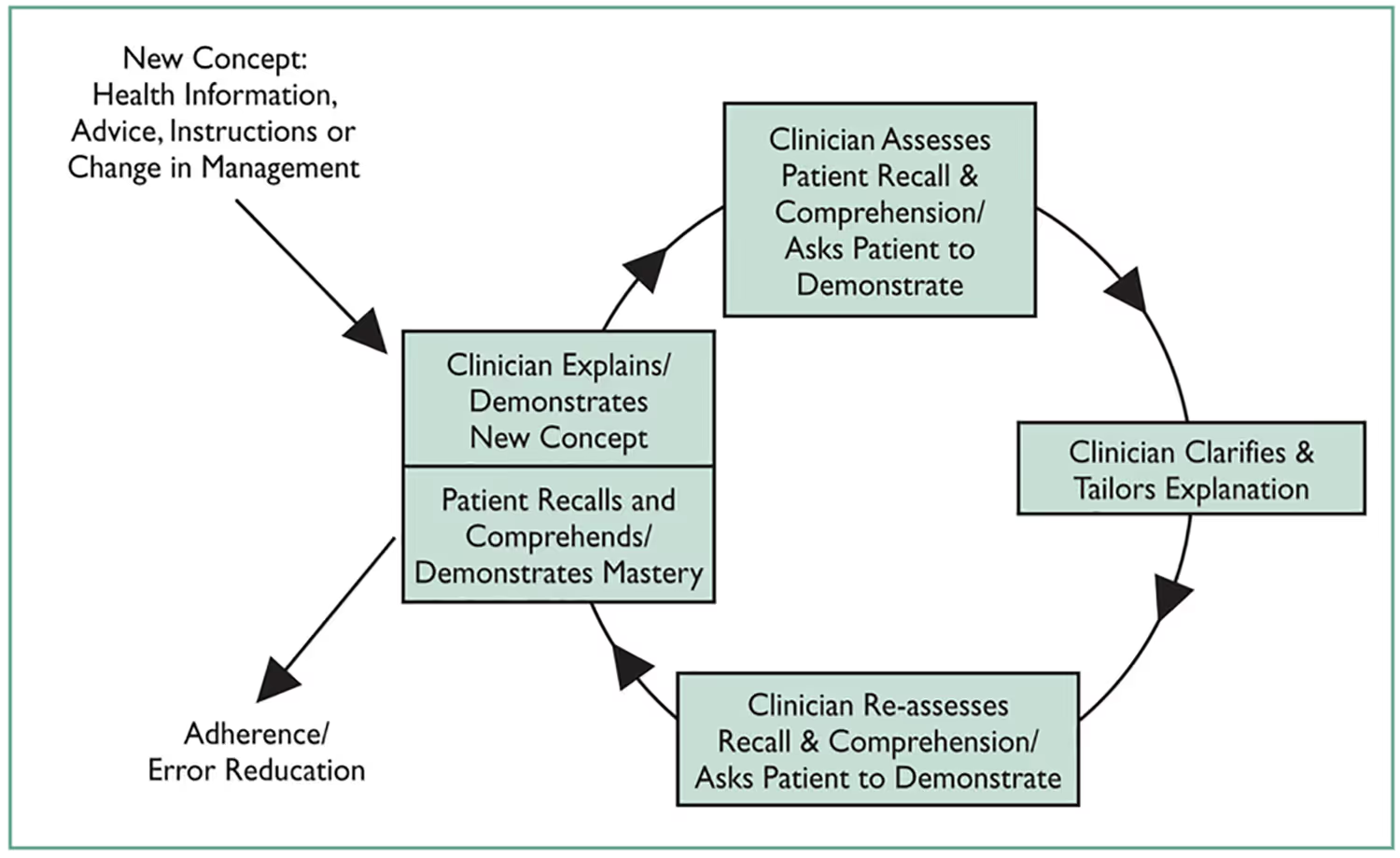The Ultimate Guide for Patient Education Materials
A simple way for doctors to educate their clients is by providing patient education materials. But how can you ensure as a medical professional that these materials will be effective? To help you, we’ve come up with guidelines to follow when deciding how to make this helpful content.

At least 50% of patients with chronic conditions don’t adhere to their treatment. When people don’t follow their medical plans, it leads to worse health outcomes and higher medical costs.
In extreme cases, it even results in death. Around 125,000 people in the United States die each year due to nonadherence.

One of the most common reasons that people don’t follow treatment is due to a lack of knowledge. Only 53% of adults have intermediate health literacy. This is the ability to acquire and understand medical information to follow treatment and make health decisions.
Because of this major lack of literacy, doctors need to ensure that they’re putting more effort into educating their clients. People who don’t understand how to make medical choices and follow their treatment will fall into nonadherence.
A simple way for doctors to educate their clients is by providing patient education materials.
But how can you ensure as a medical professional that these materials will be effective? To help you, we’ve come up with guidelines to follow when deciding how to make this helpful content.
Understand How Patients Learn
Everyone learns differently. This shouldn’t come as a surprise. Maybe you remember hearing about the different learning styles at some point in your life and you know which method is best for you.
If the VARK model rings a bell, you know what I’m referring to. This is the acronym for the four different types of learning through our various senses. It includes visual, auditory, reading/writing, and kinesthetic. Let me break this down some more.

Visual refers to when people learn through what they see. They understand information best when it’s in a graphic format such as charts, diagrams, and symbols.
Auditory learners are those who process material easiest when they hear it vocally. Discussions with others about information are helpful for them. They also benefit from reading aloud to themselves.
Those who are reading and writing oriented understand by reading the information in the form of handouts or a presentation. Copying notes also makes it easier for them to recall later.
Finally, kinesthetic applies to people who prefer a hands-on and active physical approach to education. They tend to use all their senses to learn.
As a health professional, it’s important to know how clients learn before giving them patient education materials. Without knowing the best method for them, you would be wasting your time by giving them content that isn’t useful and won’t teach them anything.
Sometimes it’s easy to narrow down the most effective method.
For example, young children won’t understand through reading and writing since they can’t do these things yet. Experts have grouped them into the other three categories…
- Auditory
- Visual
- Kinesthetic
So as a pediatrician, it wouldn’t be helpful to give them handouts with a lot of information. But this could be useful for their parents to have.
People who have difficulty hearing, such as older adults, wouldn’t be auditory learners. And those with visual impairments will rely on their other senses.
If it’s harder to determine the best method for certain people, you can ask them what they prefer. Some will know what’s effective for them which makes it easier for you to choose what kinds of materials to offer.
Identify the Best Format for Your Audience
Once you identify your audience’s learning styles, you can choose the best format for your patient education materials.
There are so many different options...
- Printed Handouts
- Group classes
- Trained peer educators
- One-on-one teaching
- Demonstrations
- Models and props
- Analogies
- Webinars
- Podcasts
- YouTube Videos
- DVDs
- Powerpoints
- Charts and diagrams
- Case studies
- Posters
A learning style is only one way to narrow down which to use. Other factors such as age or access to the material will contribute to the most efficient way.
Different generations prefer using different platforms for their daily tasks.
Younger groups such as Millennials and Generation Z are the most digitally-oriented. They grew up with mobile devices and technology, offering convenience and quick access to any information they need.
Because of this, they’re more likely to appreciate education materials in digital formats. If they can access them from anywhere, there’s a higher chance that they’ll use them.
It also helps prevent finding unreliable medical information online. More and more people are turning to the internet to learn about their health.
But the internet contains so much false content.
Three-fourths of the top shared health stories in 2018 were misleading or had false information. This can be dangerous if people start to self-diagnose with Google.
Providing digital materials makes people more likely to use your resources than search for information online. As people rely more on technology for health content, you’ll want to consider new ways to offer these digital education options.
Considering access to the materials you offer is another important part of choosing the best format for your audience. If you’re going to offer digital methods, make sure your clients can obtain them.
It may be more difficult for lower-income people to access the internet so they may not benefit from your online resources. More than one in six people in poverty don’t have access to the internet. There are even more limitations for lower-income people in nonmetropolitan areas.

People in rural areas could have trouble obtaining other formats of learning, such as group classes. It’s already difficult to get to the doctor so they won’t be going out of their way for any extra education.
In these areas, one-on-one learning can be helpful with home health services. This way, the health providers come to them to provide them with treatment and demonstrations of proper care. It solves their issue with access to digital learning and getting to a health provider on their own.
No matter what format you choose for patient education materials, it’s necessary to consider if it’s suitable for your client demographic.
Follow Best Design Practices
When creating any content, you want it to be engaging.
Otherwise, people will zone out, stop paying attention or give up altogether. This defeats the entire purpose of putting them together to educate patients.
To make sure this doesn’t happen, you’ll need to follow best design practices. This helps you make visually appealing content that people want to look at.
You can find details about how to effectively use design elements here, but this image demonstrates four of the design principles.

The principles and elements you use will get people to focus on the most relevant information. Effectively implementing these make materials easy to understand.
Here are some examples to give you inspiration for visual handouts. They can be a starting point when creating eye-catching content and getting used to how to design them.
As you start creating your educational content, keep these design tips in mind. This will guide you as you begin and then transfer materials across different formats.
Use Them in the Best Learning Environment
I think most people can agree that it’s difficult to focus on something when we don’t feel comfortable.
Of course, a health facility isn’t the most pleasant experience. This can make it a challenge to pay attention to what our doctors are telling us about our health and treatment.
In fact, people forget up to 80% of information from their doctor immediately after they leave their appointments. Studies show that higher anxiety correlates to lower working memory. Stress contributes to cognitive problems with attention and focus, learning and recall, and memory.

Because of this, use patient education materials in the best environment for people to remember the information. Health literacy starts at the facility, yet it needs to go beyond that.
Providing a more comfortable space for patients to learn will help them retain more of these details that they’d normally forget. This could mean doing one-on-one learning outside of a regularly scheduled visit.
Another option is hosting group classes or support groups, like Maggie’s Oxford Center provides for people affected by cancer. This center offers treatment and nutrition information all in a relaxing biophilic environment.
At home can be an even better option. It gives patients control to process at their own pace. Having materials that are accessible at home also serve as a reminder when people inevitably forget details. For example, it can encourage prescription compliance by sending home a copy of their medication plan.
These resources at home are also useful since people find false information online so often, as I mentioned earlier. But giving them credible resources for them to use at home guides them away from this inaccurate web content.
Rely on Health Technology
Mobile health technology is constantly growing. It’s a great way for practices to rely on these services to offer patient education materials. With so many healthcare apps for people to track and learn about their health, it’s unsurprising that patients want digital options.

And fortunately, they do most of the work for you. Let’s face it: taking time to create so much educational content can cut into valuable time with patients. And then once you make them, you need a simple way to get these to your clients.
But smart devices are an easy tool for accessing necessary medical data and content. Not only are these mobile health platforms getting more use, but many consumers are also using health wearables.
These are other tools that health professionals can use when implementing education. Many devices have connectivity options to send physicians the wearer’s data. This helps doctors track a patient’s daily health so they can determine if the person needs more literacy.
If a doctor notices any issues in their data, they can reach out to the client to offer patient education materials. This reduces some workload so they don’t make too many materials that aren’t needed. It also improves health outcomes when the doctor can track how the client is doing and give more resources.
Implement Patient Teach-Back
Teach-back isn’t like the other education methods that I’ve already mentioned. But it’s a useful technique in making sure clients understand details of their condition and treatment.
This communication method promotes patient engagement and boosts medical adherence.
Teach-back is when the medical professional asks patients or their family members to repeat back what they heard

The goal is for them to explain back in their own words what they need to do for treatment. Doing this ensures that you explained information clearly so patients know what to do when they leave the office.
One study found that around half of the information that patients retain was incorrect. So by using teach-back, doctors can fill in any gaps that they missed. It also boosts clients’ confidence in their understanding so they can feel in control of their health.
It’s a simple yet effective way to confirm that patients understand their treatment plan before leaving the doctor’s office. It reduces the need for using outside interventions if the doctor can clarify that the patient understands. This also makes it less likely for the patient to forget so much information right after leaving as I said earlier.
Conclusion
Nonadherence continues to be a problem within the healthcare industry. It leads to worse outcomes, increased costs, and has potential fatal results.
Fortunately, this is a preventable situation. One of the main reasons that patients don’t adhere to treatment is because they lack health literacy. When they don’t understand how to make decisions or follow their medical plan, they’re less likely to adhere.
Since doctors know that health literacy is a cause, they can prevent this with better education.
The first step is knowing how patients learn best. This helps when deciding what format of materials to provide. Defining the audience and their needs makes it easier when starting to create educational content.
From there, doctors can implement best design practices in various formats. There are also ways to reduce the amount of effort in creating and providing materials. Using current health technology simplifies transmitting content to clients. And using the teach-back technique can help fill in any existing gaps.
Emphasize your product's unique features or benefits to differentiate it from competitors
In nec dictum adipiscing pharetra enim etiam scelerisque dolor purus ipsum egestas cursus vulputate arcu egestas ut eu sed mollis consectetur mattis pharetra curabitur et maecenas in mattis fames consectetur ipsum quis risus mauris aliquam ornare nisl purus at ipsum nulla accumsan consectetur vestibulum suspendisse aliquam condimentum scelerisque lacinia pellentesque vestibulum condimentum turpis ligula pharetra dictum sapien facilisis sapien at sagittis et cursus congue.
- Pharetra curabitur et maecenas in mattis fames consectetur ipsum quis risus.
- Justo urna nisi auctor consequat consectetur dolor lectus blandit.
- Eget egestas volutpat lacinia vestibulum vitae mattis hendrerit.
- Ornare elit odio tellus orci bibendum dictum id sem congue enim amet diam.
Incorporate statistics or specific numbers to highlight the effectiveness or popularity of your offering
Convallis pellentesque ullamcorper sapien sed tristique fermentum proin amet quam tincidunt feugiat vitae neque quisque odio ut pellentesque ac mauris eget lectus. Pretium arcu turpis lacus sapien sit at eu sapien duis magna nunc nibh nam non ut nibh ultrices ultrices elementum egestas enim nisl sed cursus pellentesque sit dignissim enim euismod sit et convallis sed pelis viverra quam at nisl sit pharetra enim nisl nec vestibulum posuere in volutpat sed blandit neque risus.

Use time-sensitive language to encourage immediate action, such as "Limited Time Offer
Feugiat vitae neque quisque odio ut pellentesque ac mauris eget lectus. Pretium arcu turpis lacus sapien sit at eu sapien duis magna nunc nibh nam non ut nibh ultrices ultrices elementum egestas enim nisl sed cursus pellentesque sit dignissim enim euismod sit et convallis sed pelis viverra quam at nisl sit pharetra enim nisl nec vestibulum posuere in volutpat sed blandit neque risus.
- Pharetra curabitur et maecenas in mattis fames consectetur ipsum quis risus.
- Justo urna nisi auctor consequat consectetur dolor lectus blandit.
- Eget egestas volutpat lacinia vestibulum vitae mattis hendrerit.
- Ornare elit odio tellus orci bibendum dictum id sem congue enim amet diam.
Address customer pain points directly by showing how your product solves their problems
Feugiat vitae neque quisque odio ut pellentesque ac mauris eget lectus. Pretium arcu turpis lacus sapien sit at eu sapien duis magna nunc nibh nam non ut nibh ultrices ultrices elementum egestas enim nisl sed cursus pellentesque sit dignissim enim euismod sit et convallis sed pelis viverra quam at nisl sit pharetra enim nisl nec vestibulum posuere in volutpat sed blandit neque risus.
Vel etiam vel amet aenean eget in habitasse nunc duis tellus sem turpis risus aliquam ac volutpat tellus eu faucibus ullamcorper.
Tailor titles to your ideal customer segment using phrases like "Designed for Busy Professionals
Sed pretium id nibh id sit felis vitae volutpat volutpat adipiscing at sodales neque lectus mi phasellus commodo at elit suspendisse ornare faucibus lectus purus viverra in nec aliquet commodo et sed sed nisi tempor mi pellentesque arcu viverra pretium duis enim vulputate dignissim etiam ultrices vitae neque urna proin nibh diam turpis augue lacus.


.avif)

